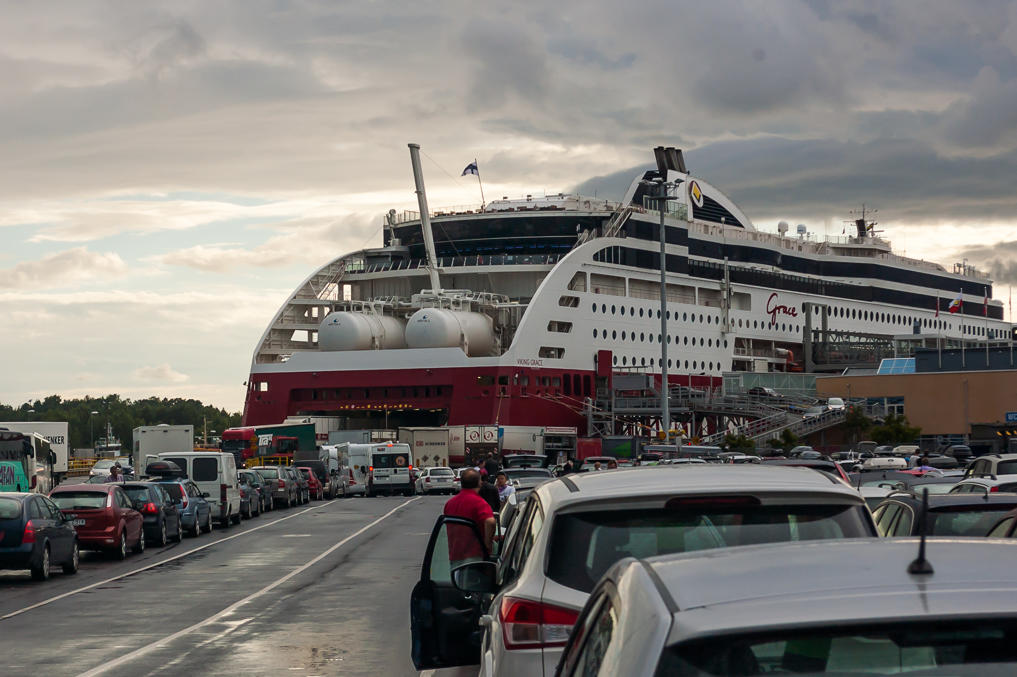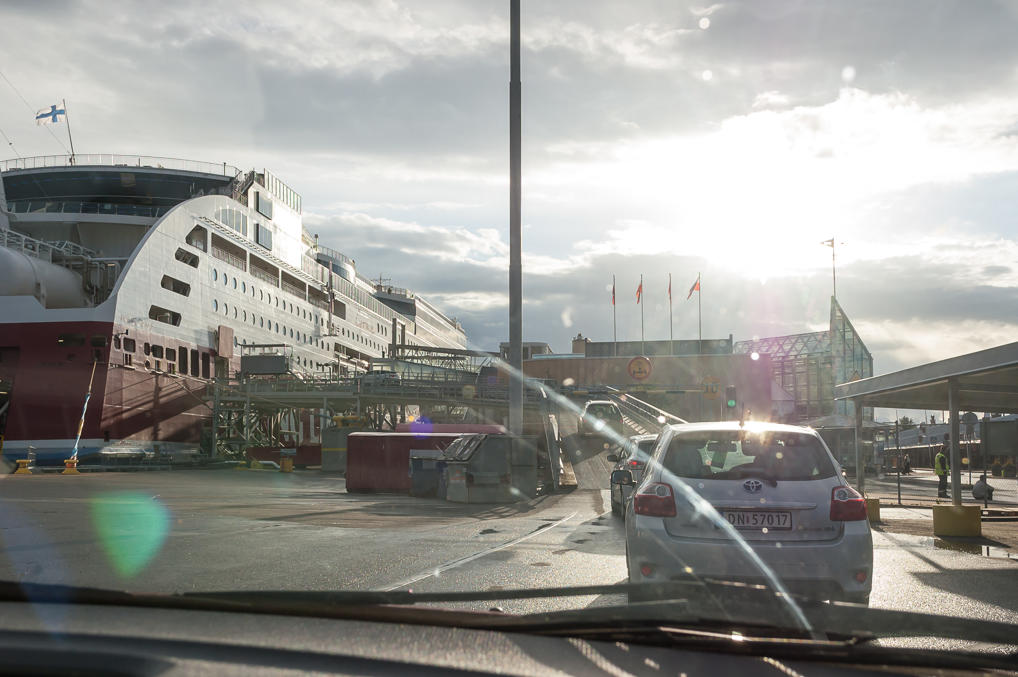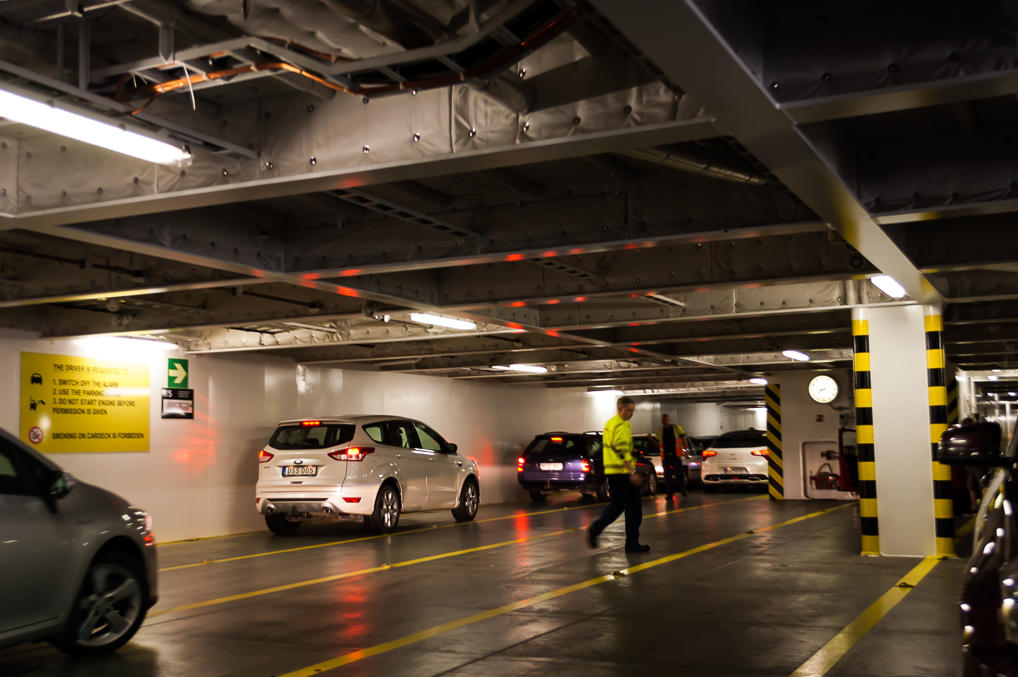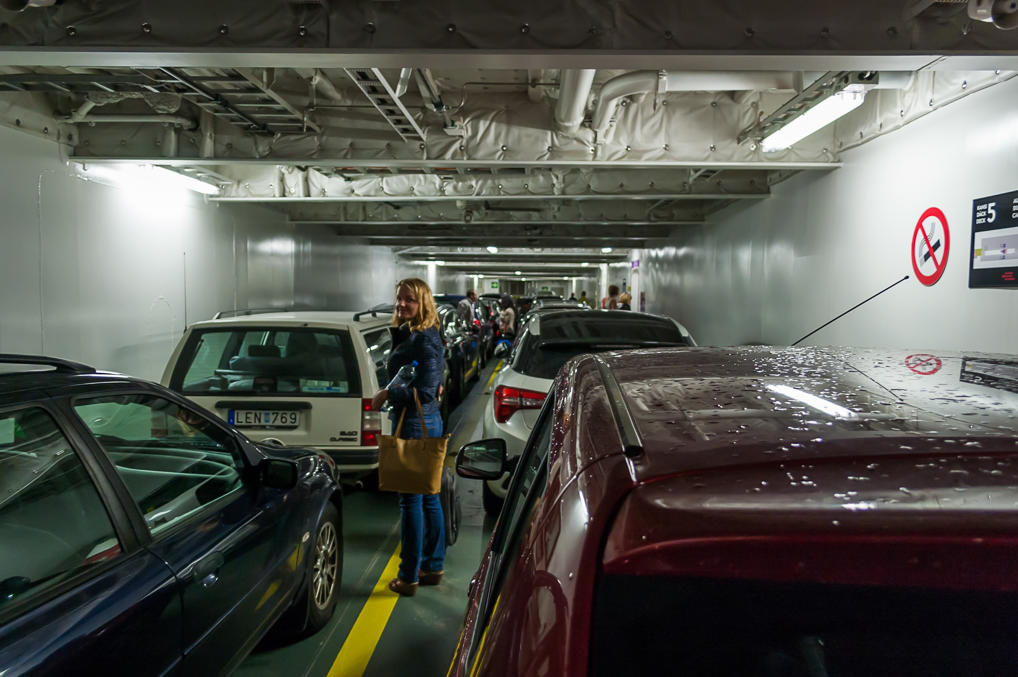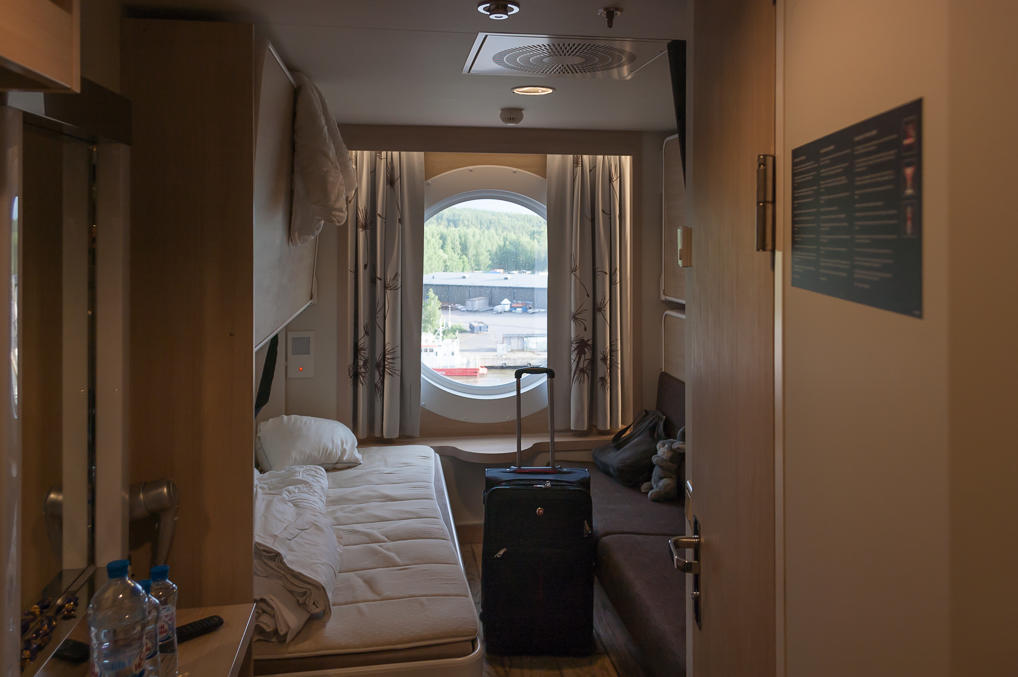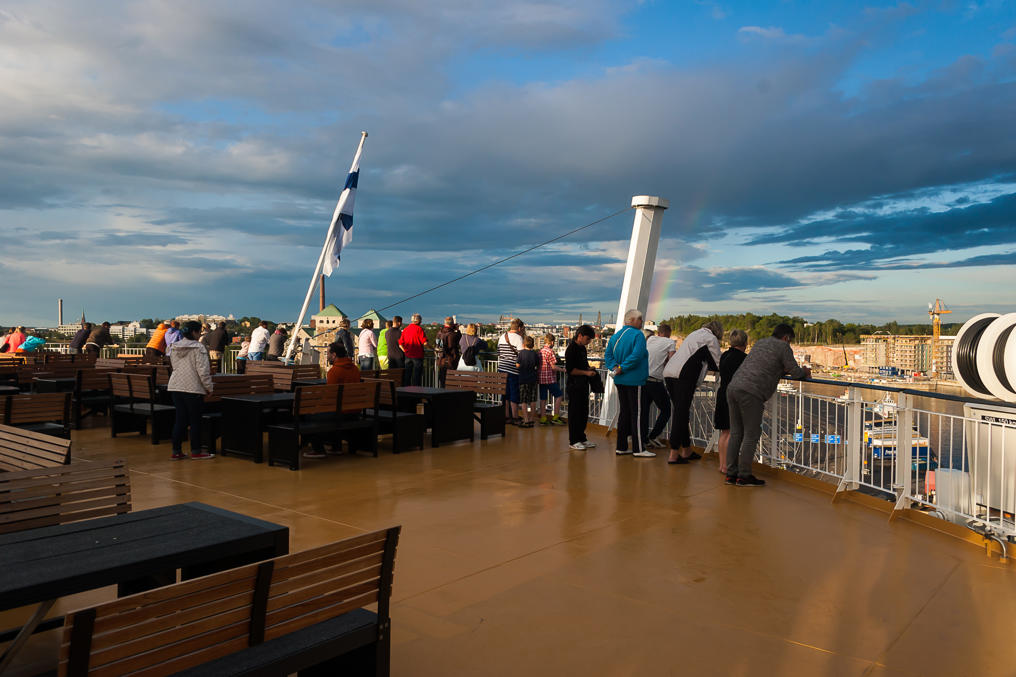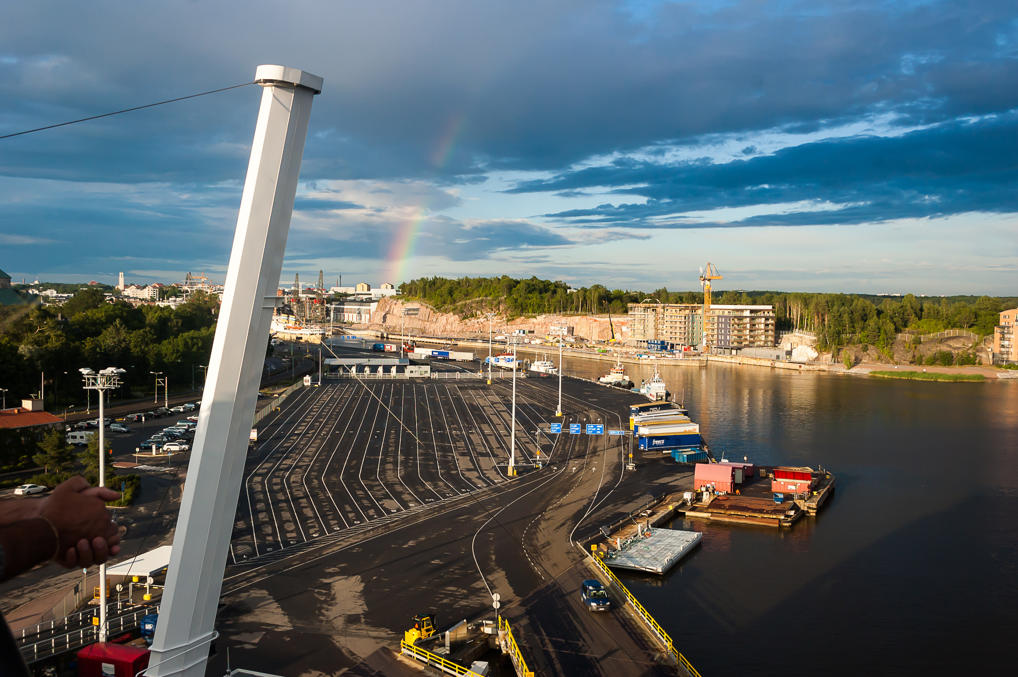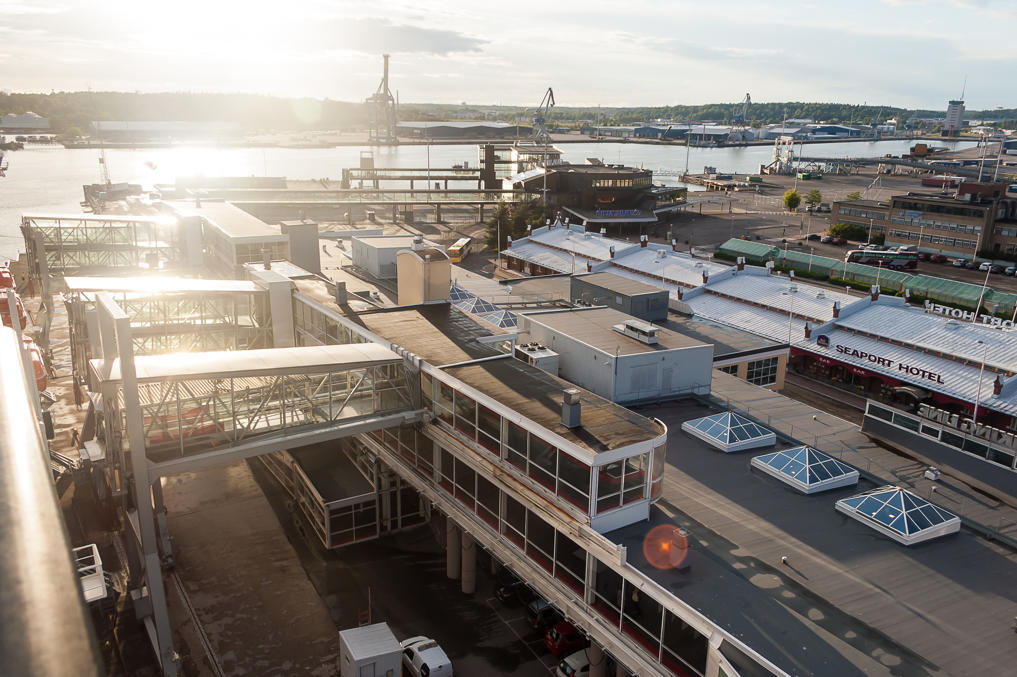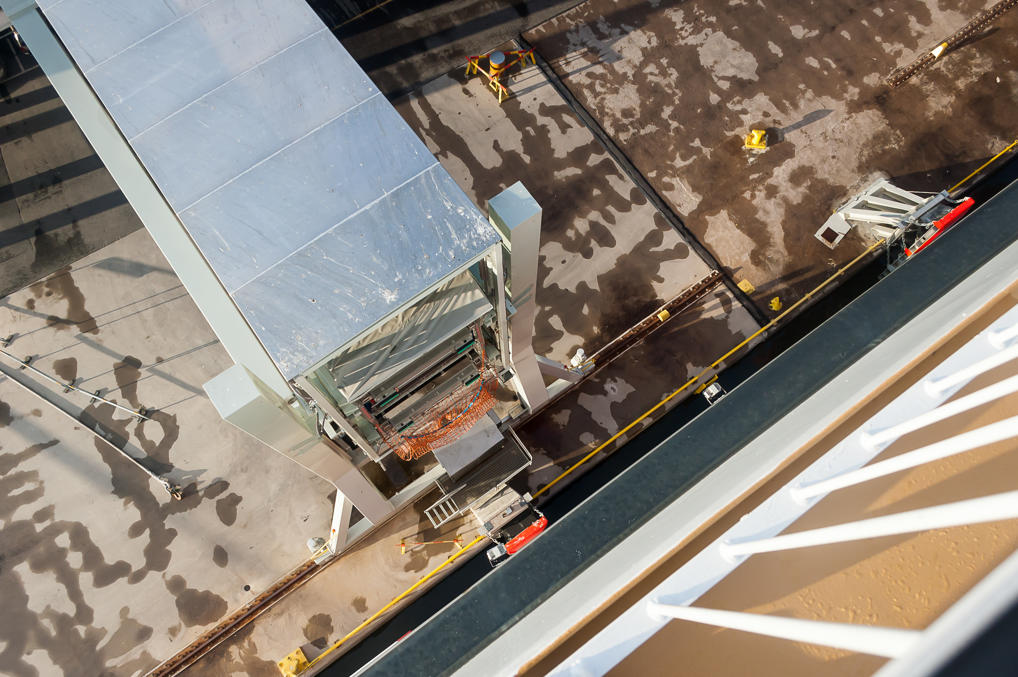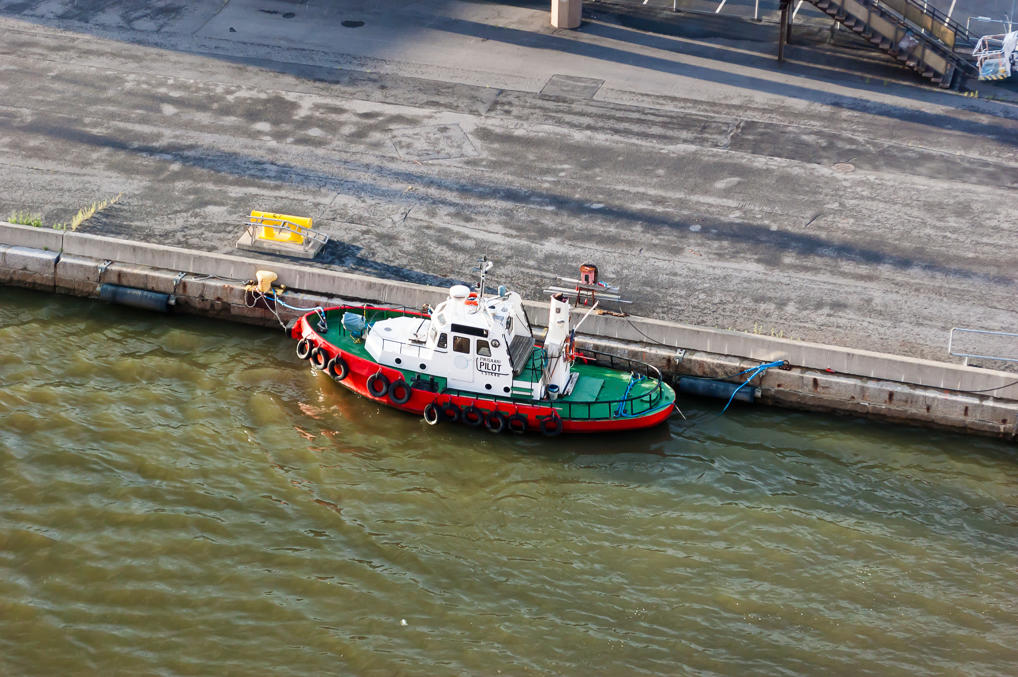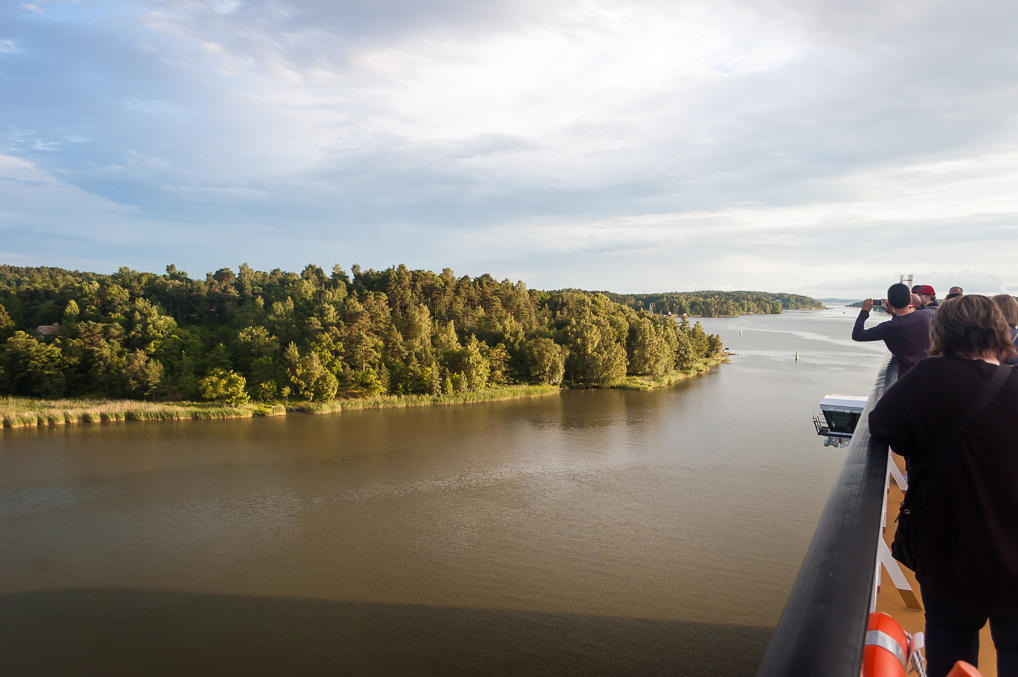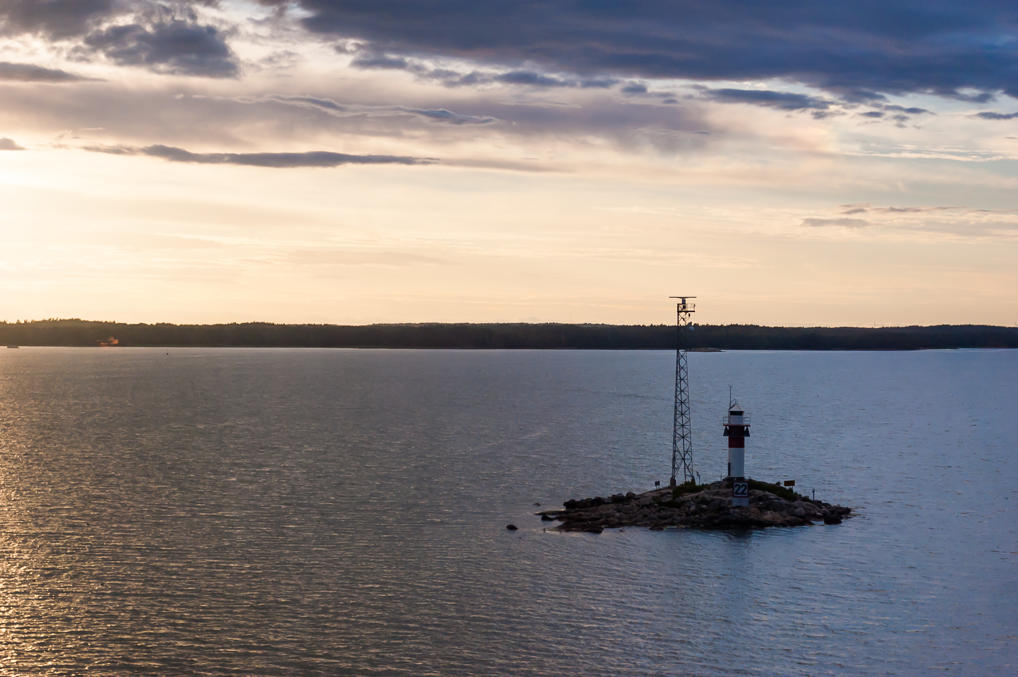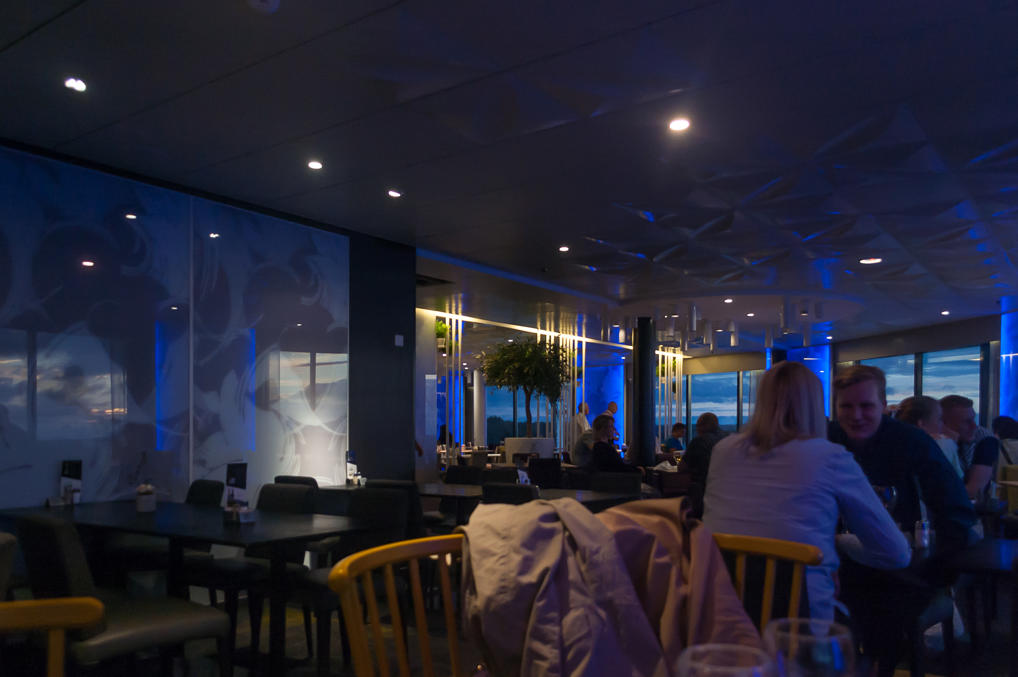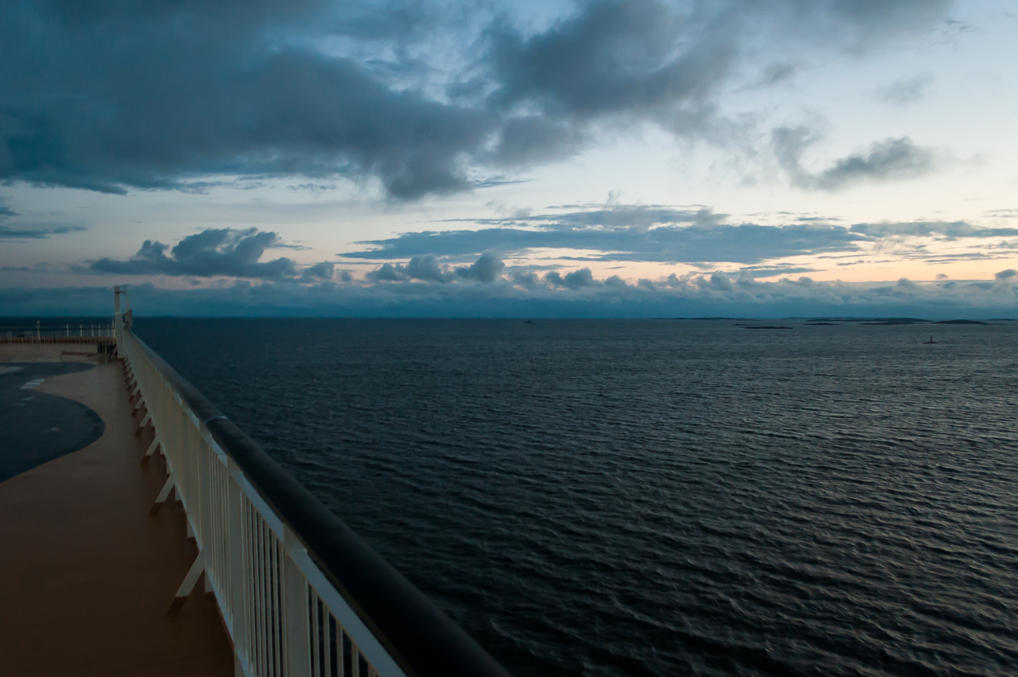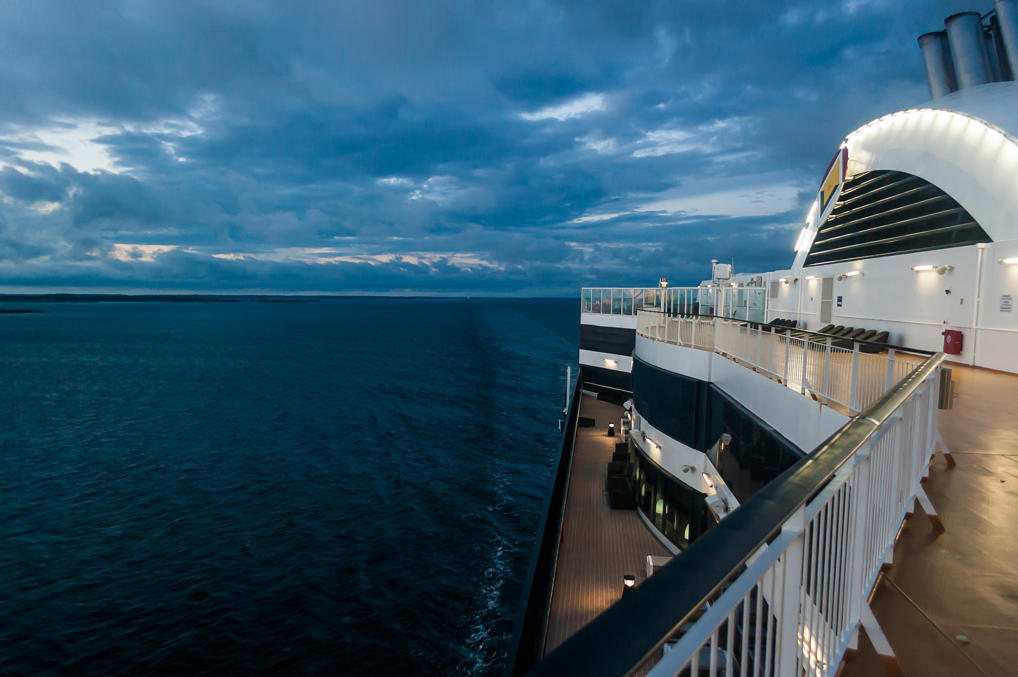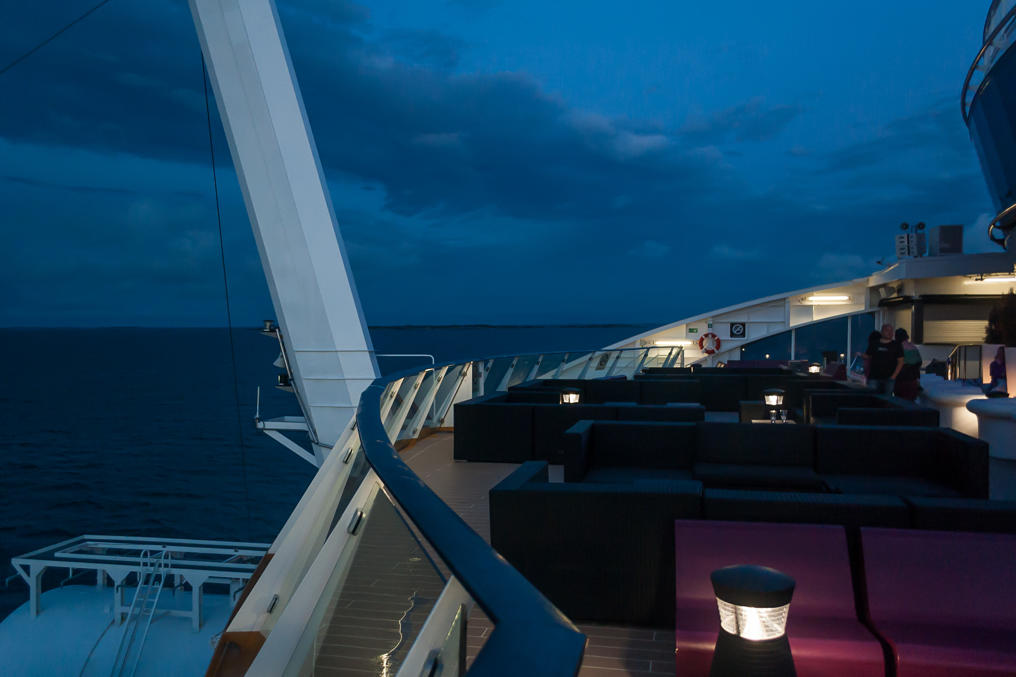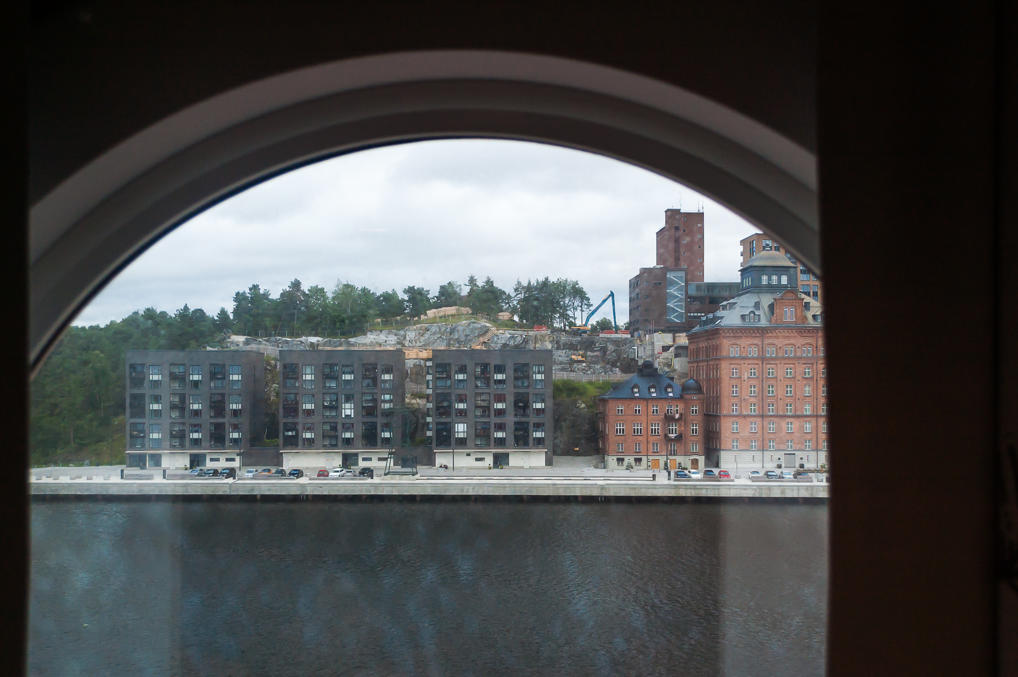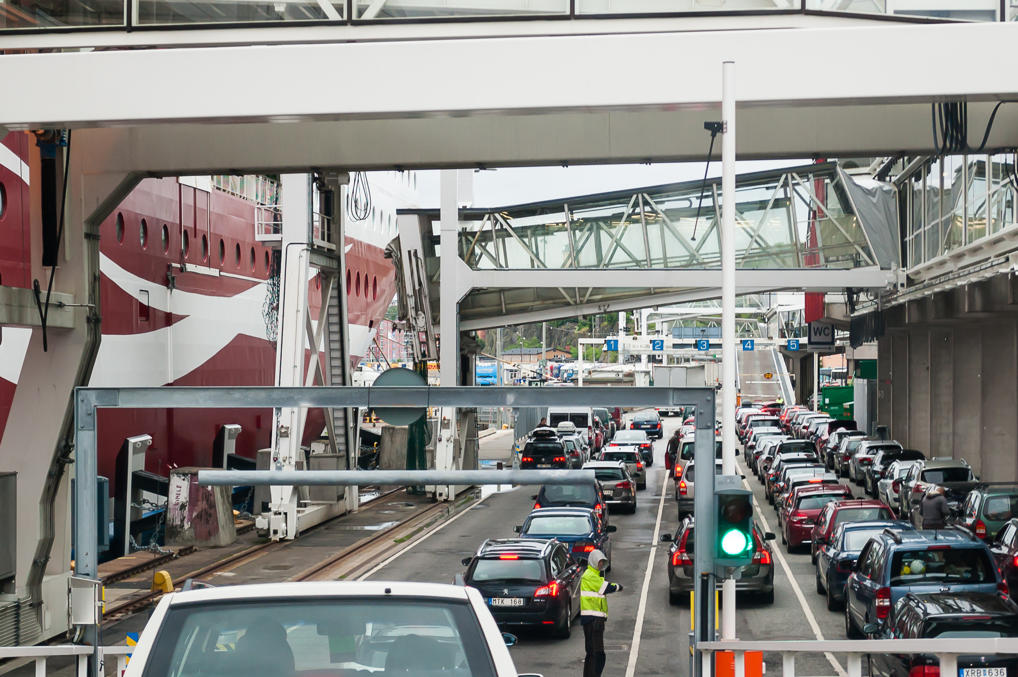In the first part, we drove from St. Petersburg to Turku (600 km), and after a short walk around Turku, got to the Viking Line ferry terminal.
The Baltic Sea boasts an extremely lively system of sea ferries. Probably no other sea in the world matches it in that respect. The main routes are Helsinki-Tallinn, Helsinki-Stockholm, and Turku-Stockholm. There are ferries to the Åland Isles, halfway between Finland and Sweden, and Finland-Sweden ferries usually make a stop at Åland anyway (this is apparently required for them to operate tax-free shops onboard). There is also a Stockholm-Riga route, some routes from Finland to Poland and Germany, Vaasa-Umeå route (Finland-Sweden but much farther in the north), St. Petersburg-Helsinki, St. Petersburg-Helsinki-Stockholm-Tallinn, and probably some others. Still, Helsinki-Tallinn and Turku-Stockholm are by far the most important ones.
Most ferries on these routes are operated by only two companies, Viking Line and Tallink-Silja. I'm not sure if there is any significant difference; so far I only had experience with Viking Line. The ferries themselves are huge, and are properly called cruiseferries. Apart from basic passage, optionally with any car or RV or even a semi truck, they offer cabins, including some luxurious ones, bars and restaurants, tax-free shops (mostly with cosmetics and jewelry), spas, nightclubs, and so on. In fact you can actually just book a round trip cruise, without actually setting a foot down at your destination, just so you can drink twice as much. Yes people actually do that, largely because of cheap booze. There is even a stereotype of "drunken Finns falling asleep right in the corridors" although I didn't actually witness anything to that degree.
Even if you actually just want to drive from Finland to Sweden, the ferry is the only reasonable option. You could drive all the way around the Baltic Sea up north, of course. That would be 1800 km from Turku to Stockholm. That's two days of driving, and the gas alone would cost you more than a ferry ticket. The scenery would not be particularly exciting as well, not on the Finnish side at least.
So, we were interested in an overnight passage from Turku to Stockholm (and back, eight days later), for three people with a regular-sized car. This cost us €495, with a return trip. This included breakfasts, both for direct and return trip, and a dinner in all-you-can-eat buffet, for direct trip only (although we ended up buying it on the return trip anyway). It would have been €342 without any meals. Could have been even cheaper if we picked a cabin without a window for the direct trip. By the time you get to your cabin you're generally too drunk to enjoy the scenery anyway. The price seems reasonable enough. In fact most of long-distance ferries on other routes I considered for possible travels seem to cost significantly more.
1. We booked and paid our passage two weeks in advance, although in theory you can buy a ticket right at the registration booth before departure. The Viking Line terminal in Turku is located right by the old castle (which I still haven't visited as of now). The directions to "Satama" (Finn. Harbor) and "Viking Line" are posted on regular street signs around Turku, although using a navigator is still recommended. Upon getting there — the ticket suggests an hour in advance, although in practice half an hour will likely be fine as well — you present your booking printout to a girl in a registration booth, get your keycards for the cabin, cards for meals (if any), and a paper you have to put on your rear view mirror. Then you get directed to one of the queues. Then there's some wait.
As you can see, the huge ramps in the back are used by semi trucks and other larger vehicles. (As far as I understand there are also Ro-Ro ships specifically built for semis on this route, but cruiseferries also accept semis.) To the right you can see the terminal building with boarding bridges for car-less travellers, not unlike what you can see in an airport. And then in between there's a rather tiny hole with a long ramp for cars.
By the way, there was an accident in 1994, on an Estonian ferry appropriately named Estonia, when those ramps in the back basically opened up by themselves at sea during a storm, and the ship filled up with water and sunk. 853 of 989 people aboard died, making this the deadliest peacetime shipwreck in European history. Since then of course they made huge safety improvements. Like making sure rear ramps do not open up at sea.
2. After an hour or so in this queue, it is finally our turn.
3. It's steep!
4. Almost there...
5. Boarding the car deck. The ferry personnel show you where you're supposed to pull up. Overall boarding a ferry is very simple (which in my case means "you don't need to talk to anyone"), although I can't help wondering what happens if you bump into anyone and block everyone behind you.
6. The cars have to be packed very tightly, leaving 20 cm or so between them. You'd better remember where you left your car; the car deck is large and fairly featureless. It also gets locked soon after departure, so take all the stuff you need from the car.
7. A short elevator ride, and here's our cabin! Deck 7 or 8, I don't remember exactly. With a window, as advertised. When I first travelled on a Viking Line ferry (a year earlier), I expected something like a Russian train compartment. It's actually much better than that, with spacious enough beds, air conditioning, and your own toilet and a shower. I saw worse hotels, anyway. There's working Wi-Fi and a TV which greets you by your name and can show you various information about the ship, although its most interesting feature, live map, didn't work. The cheaper kind of cabin doesn't differ in any way, except that there's a picture instead of a window. There are more expensive cabins as well.
8. The ferry departs at 20:55 and arrives at 7:30 (6:30 Swedish time, it's a different time zone from Finland). That's not a lot, really. So the plans are: watch the departure from the sun deck, dinner at all-you-can-eat buffet, sleep, breakfast, and disembark. So the first thing we did after leaving our stuff at the cabin is climbing to the sun deck. This is the part of the ship where you can actually walk "outside" and get perfect views in any direction.
Our ferry is called Viking Grace, and it is actually the most modern ferry in Viking Line fleet, built in 2013. It was constructed in the (new) Turku shipyards, and has Wärtsilä engines, so I guess Finns and especially Turku citizens get patriotic as hell onboard. For the return trip we had Amorella, a much older ship, built in 1988 in Croatia. It's not really much worse than Viking Grace, although its planning leaves something to be desired (cheap cabins are on the second-lowest deck, below the waterline, and right by the engine room), and the interiors show some wear.
9. Watching departure from the aft part of the sun deck. The buildings visible in the distance to the right are Telakkaranta neighborhood under construction, seen in the previous part.
10. All the waiting lines are empty by now. To the right is a disembark ramp.
11. The terminal building. Used only by car-less travellers, so I have no idea what it looks like from the inside.
12. The Åbo Castle is clearly visible to the left. It is one of the oldest building in Finland, dating back to 1280. And if you look closely, you can also notice a row of railway catenary poles below; there is a passenger railway station next to the terminal building.
13. The boarding bridges are withdrawn now, and we're sailing away in a couple of seconds.
14. Here we go!
15. From the starboard side, you can enjoy views of other parts of Turku seaport, like this pier where a pilot boat is moored.
16. Tallink-Silja ferry terminal is in the middle. No Silja ferries are present at the moment. To the left is a cargo area of the seaport.
17. And from the port side, the island of Hirvensalo (Finn. Moose Thicket) stretches for several kilometers along the waterway. Hirvensalo and Ruissalo are two islands of the Archipelago Sea closest to Turku, essentially its suburbs. The islands in the vicinity of Turku are connected to the mainland with bridges, but farther out, there are only small road ferries.
18. Hirvensalo shore is full of gorgeous houses and cottages. This must be a very expensive place to buy a house in, I imagine.
19. The islands soon withdraw farther, and you get to enjoy evening views of the Archipelago Sea, with its skerries and lighthouses.
20. More of the Archipelago Sea.
21. The previous two pictures were actually taken right from a window of the Aurora all-you-can-eat buffet. Located at the bow of one of the higher decks, it fully justifies its price (€30). Well sadly I'm not very interested in food, so there are no food pictures and I can't even remember what kind of food they offered. Well there were meatballs and watermelon. And unlimited beer and wine! That's the coolest part, and possibly the reason why I poorly remember the food. (Seriously though, you shouldn't overindulge in drinks if you're going to drive in the morning. On the return trip, Finnish police stopped and tested for alcohol drivers of every single car leaving the ferry; wouldn't be surprised if the Swedish occasionally do that too.)
22. One more peek from the sun deck after dinner.
23.
24. View from the stern. We almost left the Archipelago Sea.
25. Well... Time to go to bed. At 1:00, the ferry briefly visits the port of Långnäs at the Åland Isles. Långnäs is pretty much a single pier at the middle of nowhere, apparently built solely so that the ferries could stop at Åland as briefly as possible. Few people actually board or disembark here, but stopping at Åland is legally required if the ferry wants to operate a tax-free shop. I'm not sure on the details. Anyway, I wouldn't mind if the trip was a little bit longer; there is really not enough time for sleep.
26. And so here we are at the same Aurora buffet in the morning, sleepy and slightly hungover. Pancakes, watermelon, juice, and milk for us.
27. Stockholm is located on the shores and islands of a channel connecting the lake of Mälaren to the Baltic Sea. The channel is surrounded by a huge skerry archipelago, just like Turku is (still smaller than the Archipelago Sea, though). We are packing our stuff, and the ferry already passes some Stockholm suburbs.
28. Ready to go! Again, I wonder what happens if someone does not show up for the disembark in time. The cars are packed so tightly that others might not be able to maneuver around a car blocking the way.
29. And we're leaving the same way we arrived. Viking Line ferries dock at the Stadsgården terminal, fairly close to the city center. The terminal is a bit cramped and you won't get an opportunity to stop before it spews you right into a busy street (where you are not allowed to stop either). So if you need to set a destination on your navigator or something like that, you really should do it before leaving the ferry.
We were planning to spend a good part of a day in Stockholm (it would be our second time there), and to leave in the evening, stopping at a motel halfway to the island of Öland. Stockholm would be the subject of the next part, so stay tuned.
